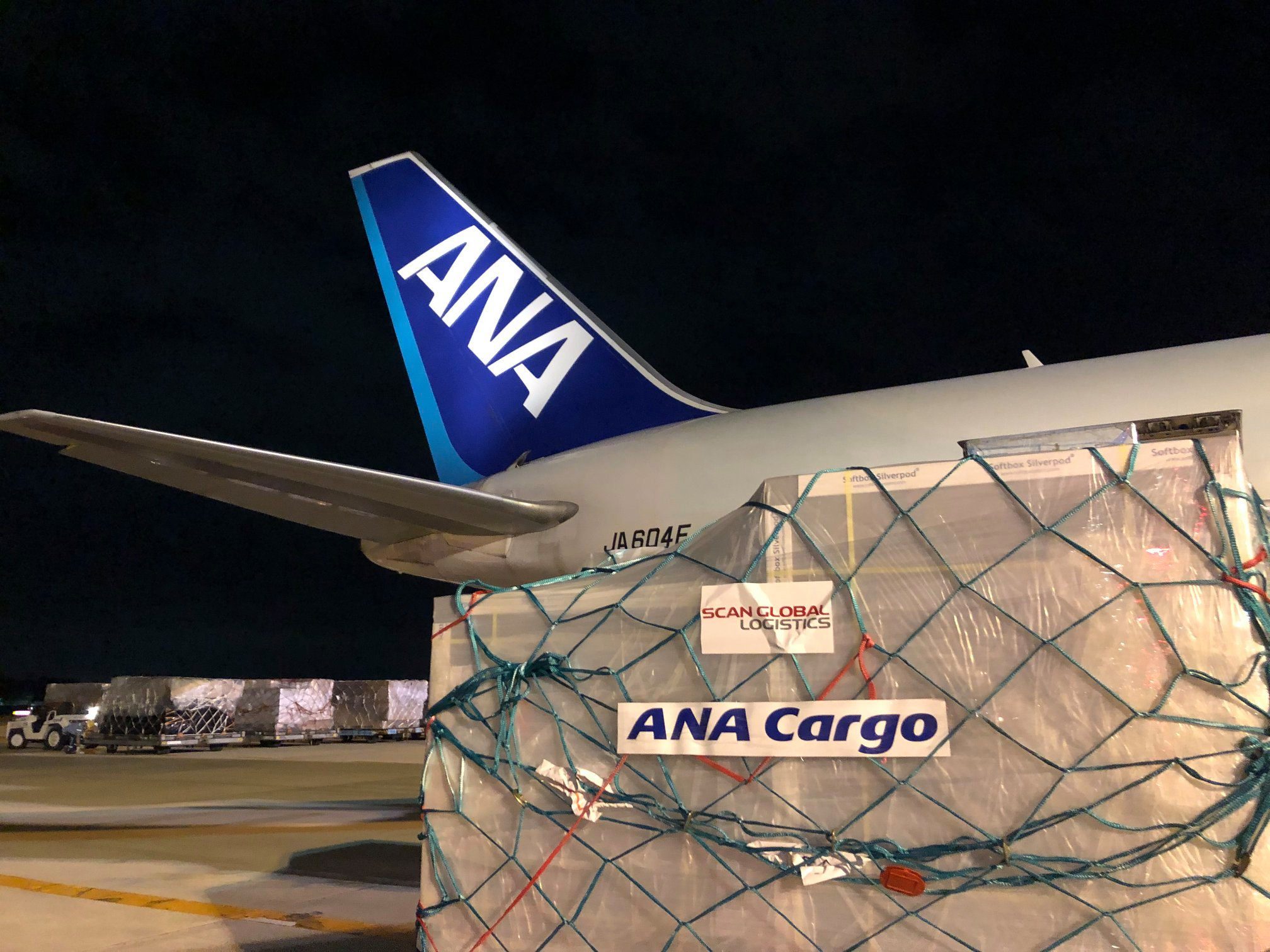
239547607 10159712824370536 5789574622192876312 n
All Nippon Airways (ANA) is slowly seeing the effects of the recovery in air travel, but just as Korean Air has benefitted in Q3 FY2021 mainly from very strong cargo results. The Japanese carrier reported a nine-month-loss of ¥102.8 billion, an improvement over ¥309.5 billion for the same period last year, it announced on February 1. ANA thrives on cargo during strong Q3.
The operating loss for the period was ¥115.8 billion versus ¥362.4 billion. Total revenues improved to ¥738 million from ¥527.6 billion. ANA’s operational expenses dropped 36 percent to ¥853.8 billion. The result was also improved by a reduction of ANA’s workforce and outsourcing costs.
Robust demand and shift away from the congested marine transport benefitted ANA’s cargo operations. Its two Boeing 777Fs have had a busy quarter and were entered on routes from Tokyo Narita to Taipei, Hong Kong, and Qingdao. They were assisted by passenger aircraft on cargo-only services. ANA ferried 932.000 tons of goods, earning ¥237.7 billion in international revenues and ¥18.7 billion on domestic routes. This compares to 561.000 tons last year and ¥101.6 billion in international and ¥15.3 billion in revenues.
ANA’s domestic network suffered frequently from the state of emergency after Covid infections were rising. Yet, the number of passengers carried went up by 33.3 percent to 13.2 million when restrictions were lifted at the end of September. Revenues were up to ¥206.5 billion versus ¥156.3 billion between March-December of FY2020. Revenue passenger kilometers improved by 32.9 percent to 12.090 million.
The international network saw an increase of 71.2 percent of passengers carried to 549.000. Revenues increased to ¥48.2 billion from ¥32.3 billion. Traffic was mainly driven by the Japan-North American route, the traveling of expats, and some recovery of business travel, but the numbers are still at just ten percent of pre-Covid levels. Load factors were just 25 percent, up from 21.8 percent in 2020. RPKs went up 75 percent to 3.746 million kilometers.
Peach reports the strongest recovery
Low-cost subsidiary Peach reported the strongest growth. Passengers carried in the first nine months went up 84.6 percent to 2.9 million. Revenues improved to ¥24.5 billion from ¥15.3 billion, with load factors up to sixty percent from 48.4 percent. Numbers exceeded pre-Covid levels for the first time. The international network of Peach remains suspended as long as immigration restrictions in a number of countries continue.
For the full year FY21, ANA is forecasting a ¥100 billion net loss, a quarter of the ¥404.6 billion reported in FY20. Operating revenues should improve to ¥1.060 billion, up from ¥728.6 billion. By December 31, ANA had ¥971.5 billion in liquidity and a ¥799.7 billion net debt. It plans to secure funds for the redemption and repayment of ¥100 billion in debts. ANA said in November it will raise ¥150 billion for establishing a new low-cost subsidiary airline.
The combined fleet of ANA and Peach included 280 aircraft on December 31 compared to 293 last March. It phased out ten Boeing 777s, seven Airbus A320ceo’s, and five Boeing 737-700s but took delivery of five A321neo’s (ANA), two A321neo’s and one -LR (Peach), and three Boeing 787-9s (ANA).
Views: 2



